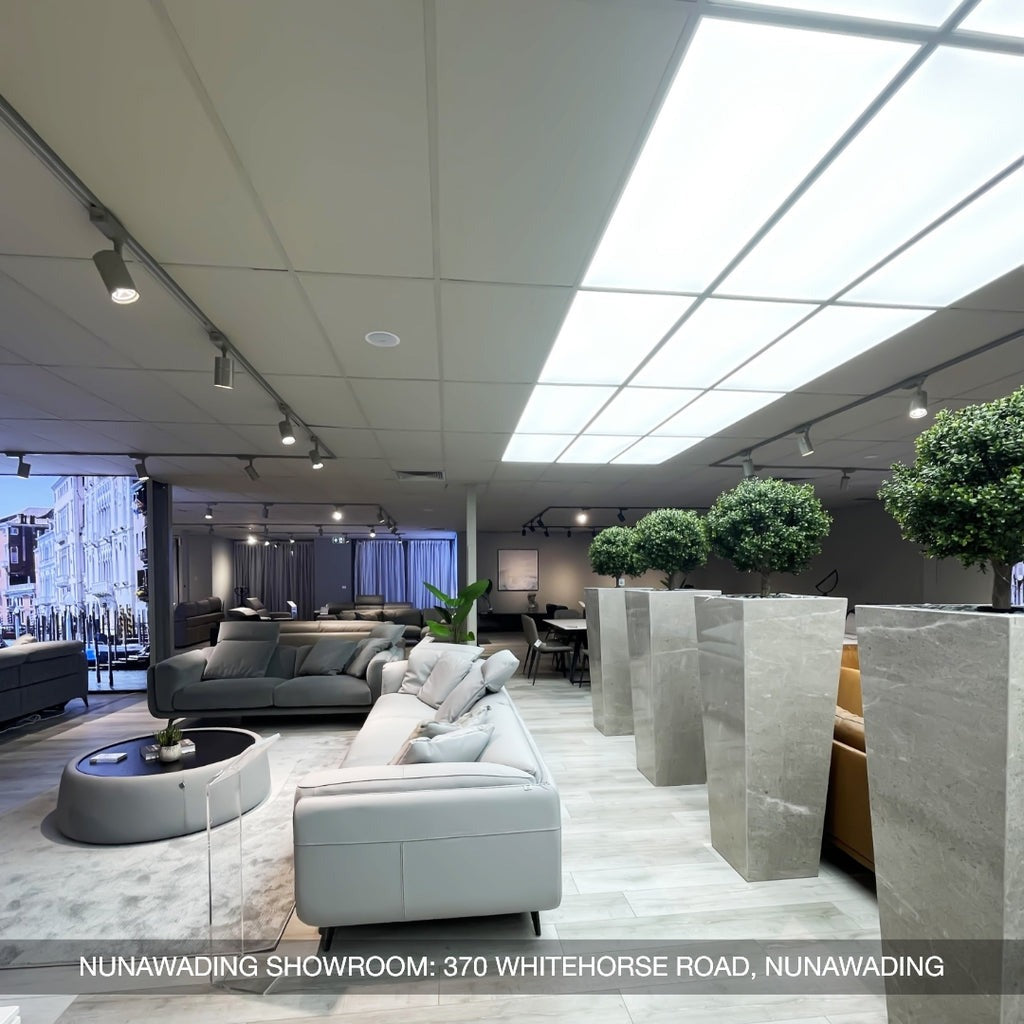The dining room is a space where we gather to share meals with loved ones, celebrate special occasions, and create lasting memories. It's also a room that has significant energetic implications, according to the principles of feng shui. By applying feng shui to your dining room, you can enhance the energy in this space, create a harmonious environment, and foster positive relationships among those who dine there. In this blog post, we'll explore the foundations of feng shui for dining rooms, how to choose the right location, enhance the energy through decor, consider the relationship between the kitchen and dining room, lighting, and routine practices to maintain harmony.
Understand Foundations of Feng Shui for Dining Rooms
Before delving into specific feng shui practices for your dining room, it's essential to understand the foundational principles of this ancient practice. At its core, feng shui is about creating balance and harmony in our surroundings by manipulating the flow of energy, known as chi. There are many aspects to achieving this balance, but two principles stand out when it comes to dining rooms: the chi and the five elements and the bagua map.
Principles of Feng Shui: The Chi and Five Elements
According to feng shui, everything - including people, objects, and spaces - contains chi, an invisible energy force that flows through all things. This energy needs to move freely to promote good health, happiness, and prosperity. Five elements - wood, fire, earth, metal, and water - help guide the flow of chi throughout a space.
Incorporating these five elements into your dining room decor can help create a balanced and harmonious environment. For example, adding modern dining room furniture made of wood, plants, or green accents can represent the wood element, which promotes growth and creativity. The fire element can be represented by candles, a fireplace, or red accents, which promote passion and energy. Earth elements, such as pottery or earth tones, promote stability and grounding; metal elements, like silverware or metallic finishes, promote clarity and focus; and water elements, like a fountain or blue accents, promote relaxation and calmness.
Understanding the Bagua Map for Dining Room Application
The bagua map is a feng shui tool used to determine areas of a space that correspond to different aspects of our lives, such as wealth, health, relationships, and career. By applying the bagua map to your dining room, you can identify areas that need attention and make adjustments accordingly.
To use the bagua map, stand at the entrance to your dining room facing inward. The wall opposite the entrance represents the career area, while the wall to the left corresponds to wealth and abundance, and the back wall relates to relationships and love. The right wall corresponds to fame and reputation, and the center of the room relates to health and family. Once you've identified these areas, you can make adjustments to enhance the chi flow in each zone.

Navigating Your Space with the Bagua Map
Choosing the Right Feng Shui Dining Room Location
In addition to incorporating foundational principles, choosing the right location for your dining room is essential for optimal feng shui energy. Here are some key considerations when selecting a site for your dining area:
Ideal Locations for a Harmonious Dining Experience
Ideally, the dining room should be located near the kitchen, with a door connecting the two rooms. This setup allows for easy flow between the cooking and eating areas and promotes harmony between the two spaces. If possible, avoid placing your dining room near an entryway, bathroom, or laundry room, as these areas can disrupt the flow of positive energy.
The Connection Between Kitchen and Dining Room in Feng Shui
The kitchen and dining room are closely related in feng shui, as they both involve food preparation and consumption. Therefore, it's essential to consider the connection between these spaces when applying feng shui for dining rooms. To create a harmonious energy flow between your kitchen and dining room, place a mirror in the dining room reflecting the stove in the kitchen. This arrangement enhances the flow of cooking energy into the dining space.
What to Do with Less-than-Ideal Spaces
Not everyone has the luxury of designing their ideal dining room location. If you have limited options, you can still apply feng shui principles to enhance the energy in your dining space. For example, placing a mirror on the wall opposite a window can reflect natural light and bring more positive energy into the room.
Enhancing the Energy: Feng Shui Decor for Dining Rooms
Once you've selected the optimal location for your dining space, it's time to focus on decor choices that promote positive energy flow. Here are some key considerations:
Colors and Their Influence on Dining Room Energy
Color is a powerful tool in feng shui, as it can influence the energy flow in a space. When it comes to your dining room with a contemporary dining table, certain colors can enhance positive chi and promote harmony among diners. Here are some feng shui color recommendations for your dining space:
- Green: The color of growth and vitality, green can promote healthy digestion and positive relationships at the dining table. Incorporate this hue through plants, wall paint, or decor accents.
- Red: A fiery hue that promotes passion and energy, red can stimulate appetites and create a dynamic atmosphere. Use red sparingly, as too much can be overwhelming.
- Yellow: The color of happiness and joy, yellow can create a warm and welcoming feeling in your dining room. Consider incorporating yellow through table linens or decor accents.
- Blue: A calming color that promotes relaxation and tranquility, blue can create a soothing ambiance in your dining space. Use lighter shades to avoid creating an overly formal environment.
- White: A neutral color that promotes purity and clarity, white can create a clean and refreshing look in your dining room. Be sure to balance this hue with other colors to avoid creating a sterile atmosphere.

Enhance Chi with decorative elements
Furniture Choices and Arrangement for Optimal Flow
With the right furniture arrangement, including feng shui for dining table, you can optimize the flow of energy in your dining room. Here are some feng shui tips for selecting and arranging furniture:
- Choose a round or oval dining table: When considering the various shapes of dining tables, round or oval promotes equality and inclusivity among diners, and allow for easier conversation.
- Avoid sharp edges: Furniture with sharp edges can create negative energy and tension in your dining space. Opt for rounded or curved pieces instead.
- Create a focal point: Consider adding a centerpiece or statement piece of art to your dining room. This creates a visual anchor and enhances positive chi flow.
- Allow for easy movement: Ensure there is enough space around your dining table for easy movement and circulation. Avoid overcrowding the space with too much furniture.
Decorative Elements: Art, Plants, and Mirrors
Adding decorative elements to your dining room can enhance positive energy flow and create a visually appealing environment. Here are some feng shui recommendations for decorative accents:
- Art: Choose artwork that promotes positive feelings and reflects your personal taste. Avoid pieces that depict violence or negative emotions.
- Plants: Incorporating plants into your dining room decor can promote growth, vitality, and health. Be sure to choose plants that thrive in low-light environments.
- Mirrors: Placing mirrors in strategic locations can reflect natural light and enhance positive chi flow. Be sure to avoid mirrors that reflect negative aspects, like cluttered areas or sharp corners.
The Relationship Between Kitchen and Dining Room in Feng Shui
As mentioned earlier, the relationship between the kitchen and dining room is an important consideration in feng shui for dining rooms. Here are some specific practices to foster harmony between these two spaces:
The Significance of the Kitchen's Location in Feng Shui
The location of your kitchen can impact the energy flow in your dining space. According to feng shui principles, it's best to have the kitchen located in the back of the house or apartment, away from the front entrance. This allows for positive chi flow throughout the living space and minimizes distractions from outside sources.
Direct and Indirect Feng Shui Connections to Consider
There are direct and indirect connections between the kitchen and dining room in feng shui. Direct connections include doors, windows, or physical pathways between the two spaces. Indirect connections include shared elements like color schemes, decor, or architectural features. To enhance positive energy flow between the kitchen and dining room, consider incorporating similar dining table colors, materials, or design elements in both spaces.
Balancing Elements Between the Two Spaces
To promote balance and harmony between your kitchen and dining room, it's essential to balance the five elements in both spaces. For example, if your kitchen has a strong fire element (like a red backsplash or bold lighting fixtures), consider balancing this with earth elements in your dining room (like pottery or earth tones). This creates a harmonious energy flow between the two spaces.
Lighting and Feng Shui: Setting the Mood
Lighting plays a significant role in feng shui, as it can impact the mood and energy flow in a space. Here are some considerations for optimizing lighting in your dining room:
Importance of Natural Lighting and Window Placement
Natural light is a powerful source of positive energy in feng shui for your dining room. When designing your dining room, consider placing windows in strategic locations to allow for maximum natural light. Be sure to avoid placing your dining table directly under harsh sunlight, which can create discomfort and tension.
Types of Artificial Lighting and Their Effects on Chi
Artificial lighting can also impact the energy flow in your dining room. Here are some feng shui recommendations for artificial lighting:
- Avoid harsh overhead lighting: Bright and direct overhead lighting can create an uncomfortable atmosphere. Consider using dimmer switches or indirect lighting options.
- Use warm-toned bulbs: Cool-toned bulbs can create a sterile environment, while warm-toned bulbs promote comfort and relaxation.
- Choose lighting fixtures mindfully: Select lighting fixtures that complement your decor style and promote positive energy flow.
Layering Lights for a Balanced Dining Room Ambience
Layering different types of lighting in your dining room can create a balanced and harmonious atmosphere. Here are some ways to incorporate multiple layers of lighting:
- Ambient lighting: This is the primary source of lighting in your dining room, usually provided by overhead fixtures or wall sconces.
- Task lighting: Task lighting provides focused light for specific activities, like reading or playing games at the dining table.
- Accent lighting: Accent lighting highlights specific areas or decor elements in your dining room, like artwork or decorative accents.

Layered Lighting for Harmony
Maintaining the Harmony: Routine Practices
Once you've implemented feng shui principles in your dining room, it's essential to maintain the harmony through routine practices. Here are some feng shui recommendations for keeping your dining space in optimal condition:
Regularly Clearing Clutter for Uninterrupted Flow
Clutter can disrupt the flow of positive energy in your dining room. Regularly decluttering your dining space (and kitchen) can promote a sense of calm and improve energy flow. Consider setting aside time every week to clear out unnecessary items and organize your dining room space.
Seasonal Adjustments and Refreshes to Sustain Balance
As the seasons change, so too can the energy flow in your home. Making seasonal adjustments and refreshes to your dining room decor can help promote balance and harmony throughout the year. For example, incorporating warmer colors in the fall and winter can create a cozy and welcoming atmosphere.
The Role of Family Gatherings and Shared Meals in Energizing the Space
Finally, the act of sharing meals with loved ones can energize your dining space and promote positive relationships. Consider hosting regular family gatherings or dinner parties to foster good energy flow and strengthen connections among diners.





